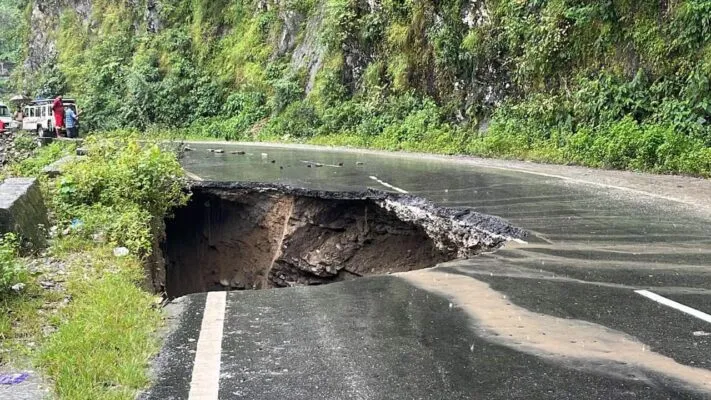Relentless rains have devastated the hill districts of North Bengal, triggering multiple landslides and floods that have claimed at least 17 lives in Darjeeling so far. The region remains under a red alert, with roads cut off, bridges destroyed, and tourist access shut down.
Bridges Washed Away, Roads Severed
One of the most serious infrastructure failures was the collapse of the Dhudia Iron Bridge, a key connector between Siliguri and Mirik. The bridge, located over the Balason River, snapped due to the force of floodwaters after continuous downpours. Visuals aired by India Today TV captured the scene, showing a broken span in the middle and homes along the banks collapsing into the debris below.
Nearby, another major slide occurred along National Highway 110 near Hussain Khola, which has completely severed road links between Siliguri and Darjeeling. These routes are vital not just for locals but for travelers en route to Sikkim, which is now also cut off.
Tourists Stranded as Travel and Sites Shut Down
With Durga Puja holidays drawing tourists from Kolkata and other parts of the state, many are feared stranded. In response, the Gorkhaland Territorial Administration (GTA) has suspended tourist activity in Darjeeling, including popular destinations like Tiger Hill and Rock Garden. Toy train services have also been halted.
Authorities have urged all residents and tourists to stay alert to weather and road conditions. A helpline (9147889078) has been set up by Bengal Police for those stranded.
Lives Lost in Dead-of-Night Landslides
The human toll is rising. Among the dead are four individuals in Mirik, who were asleep in a house that was buried in a sudden landslide between 2 AM and 3 AM near Dara Gaon.
“They had gone to Dara Gaon from Salbari near Siliguri to celebrate Dasai (Dusshera), the biggest festival of the Gorkhas,” said Aditya Pradhan, a local leader from Mirik’s Panchayat Samiti.
Heavy damage has also been reported from Sukhia Pokhari and other nearby towns, where rescue teams are operating under hazardous conditions.
Widespread Flooding Across North Bengal
The situation is no better in surrounding districts. Jalpaiguri’s Malbazar is heavily flooded, while rivers such as the Teesta and Mal have breached their danger levels. Alipurduar, Kalimpong, Cooch Behar, and Jalpaiguri continue to face high rainfall risks, with the IMD extending a red alert for several areas until October 7.
“Due to the incessant heavy rainfall in North Bengal, the hilly regions of Darjeeling, Kalimpong, and Kurseong have been severely affected, with communication and transport links to the plains of Siliguri, Terai, and Dooars almost completely disrupted due to landslides and flooding,” wrote Suvendu Adhikari, Leader of the Opposition, on X (formerly Twitter).
Official Warnings and Meteorological Outlook
The India Meteorological Department has attributed the extreme rainfall to a well-marked low-pressure system over parts of Jharkhand, South Bihar, Southeast Uttar Pradesh, and North Chhattisgarh, which is expected to move northeastward and weaken gradually.
Their forecast includes light to moderate rainfall in most places across the state, with Bankura recording the highest in the last 24 hours at 65.8 mm. North Bengal, however, remains the most severely hit region.
“I am extremely anguished to learn about the massive damages caused due to extremely heavy rainfall in many parts of Darjeeling and Kalimpong districts. There have been deaths, and loss of properties, and damages to the infrastructure. I am taking stock of the situation, and in touch with the relevant authorities,” stated Darjeeling MP Raju Bista.
Regional Impact Beyond India
The effects of this weather system extend beyond India’s borders. In Nepal, similar weather patterns have caused 22 fatalities in just the past 36 hours, underscoring the severity of the regional storm.


